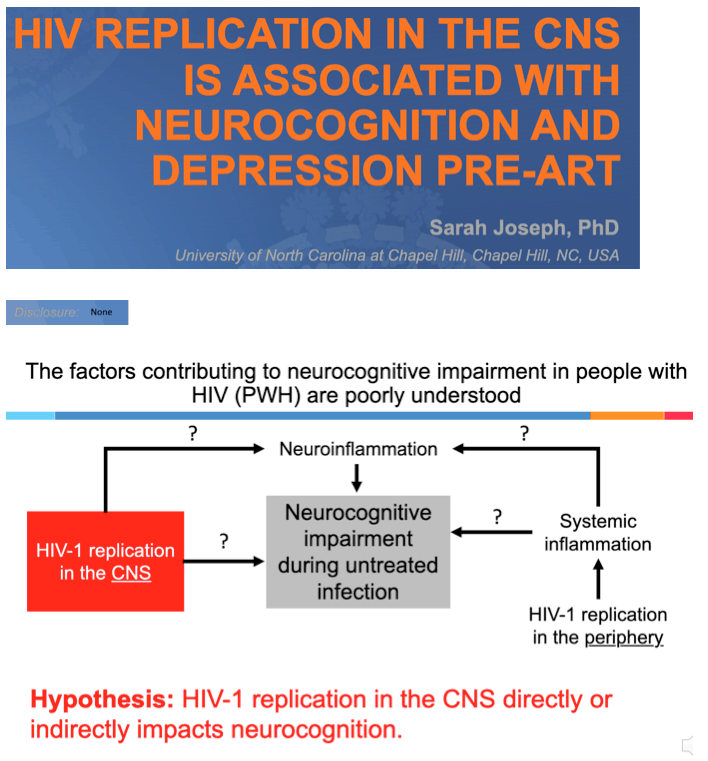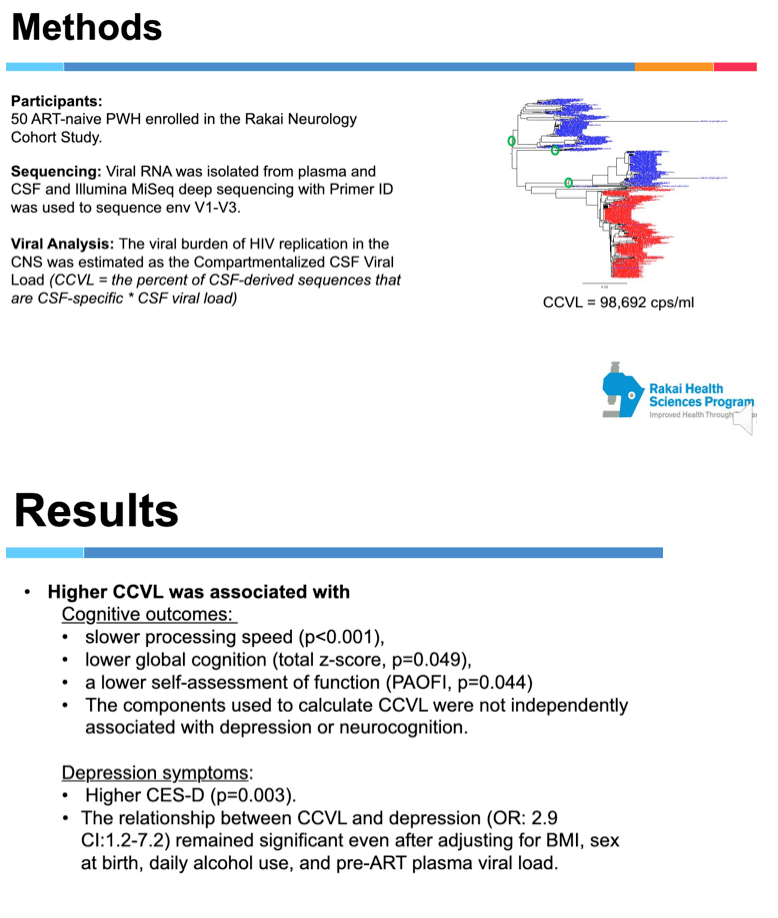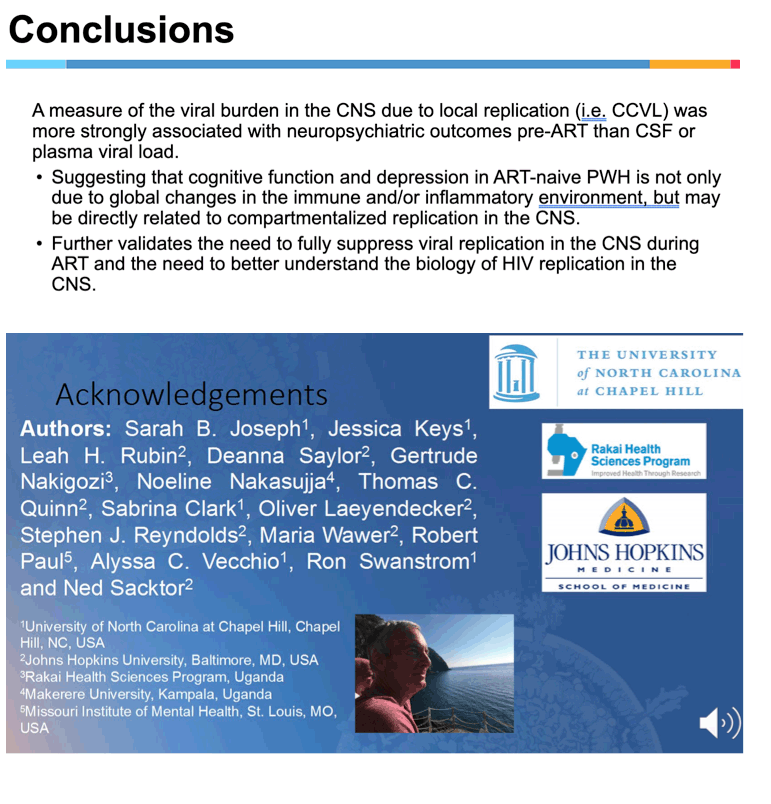 |
 |
 |
| |
HIV REPLICATION IN THE CNS IS ASSOCIATED
WITH NEUROCOGNITION AND DEPRESSION PRE-ART
|
| |
| |
CROI 2021 March 6-10 Reported by Jules Levin
Sarah B . Joseph1, Jessica Keys1, Leah Rubin2, Deanna Saylor2, Gertrude
F. Nakigozi3, Noeline Nakasujja4, Thomas Quinn5, Sabrina Clark1, Oliver Laeyendecker5, Steven J. Reynolds5, Maria Wawer2, Robert Paul6, Alyssa Vecchio1, Ronald Swanstrom1, Ned Sacktor2
1University of North Carolina at Chapel Hill, Chapel Hill, NC, USA, 2The Johns Hopkins University, Baltimore, MD, USA, 3Rakai Health Sciences Program, Kalisizo, Uganda, 4Makerere University, Kampala, Uganda, 5National Institute of Allergy and Infectious Diseases, Baltimore, MD, USA, 6Missouri Institute of Mental Health, St Louis, MO, USA
Background: People with HIV (PWH) experience more neurocognitive impairment and depression than uninfected individuals, particularly in resource-limited settings. However, initiating ART often returns neurocognition and depression to levels observed for uninfected people. Here we test the hypothesis that neurocognition and depression are substantially impacted by HIV replication in the CNS, beyond the effects of systemic replication or stigma related stress.
Methods: We successfully sequenced viral populations in cerebrospinal fluid (CSF) and blood collected from 50 ART-naive PWH enrolled in the Rakai Neurology Cohort Study (RNCS; sequencing attempted for 169 PWH). Viral RNA was isolated from plasma and CSF and Illumina MiSeq deep sequencing with Primer ID was used to sequence env V1-V3. Identification of a CSF viral lineage that was genetically distinct from HIV in the blood (i.e. compartmentalized) was evidence of sustained viral replication in the CNS. The viral burden of HIV replication in the CNS was estimated as the Compartmentalized CSF Viral Load (CCVL = the percent of CSF-derived sequences that are CSF-specific * CSF viral load). All 50 individuals completed a neuropsychological test battery, assessment of depressive symptoms (CES-D) and self-assessment of function (PAOFI).
Results: The mean CCVL in this cohort of 50 was 3.5 log10 RNA cp/ml (SD=1.72). Higher CCVL was associated with slower processing speed (p<0.001), lower global cognition (total z-score, p=0.049), a lower self-assessment of function (PAOFI, p=0.044) and greater depression (CES-D, p=0.003). Further, the relationship between CCVL and depression (OR: 2.9 CI: 1.2-7.2) remained significant even after adjusting for BMI, sex at birth, daily alcohol use, and pre-ART plasma viral load. Similarly, the components used to calculate CCVL were not independently associated with depression or neurocognition.
Conclusion: A measure of the viral burden in the CNS due to local replication (i.e. CCVL) was more strongly associated with neuropsychiatric outcomes pre-ART than CSF or plasma viral load. These findings suggest that cognitive function and depression in ART-naive PWH is not only due to global changes in the immune and/or inflammatory environment, but may be directly related to compartmentalized replication in the CNS. These findings provide additional support for the need to fully suppress viral replication in the CNS during ART and the need to better understand the biology of HIV replication in the CNS.



|
| |
|
 |
 |
|
|